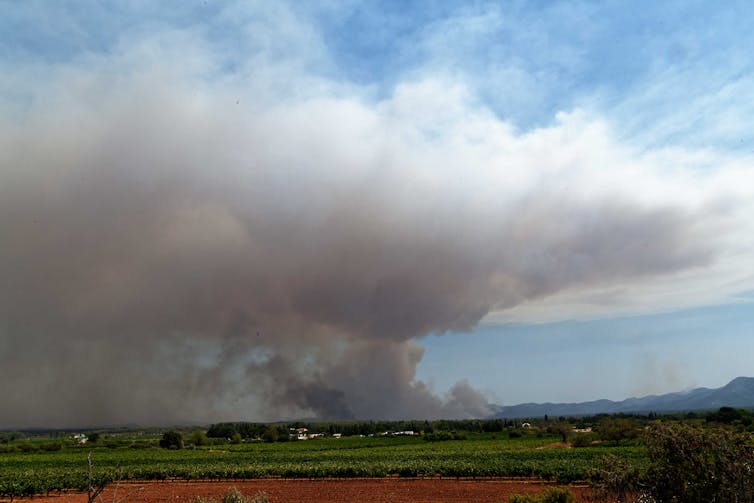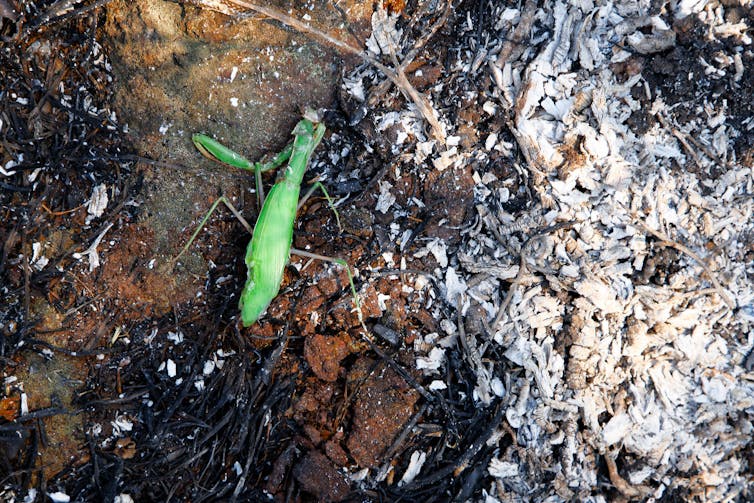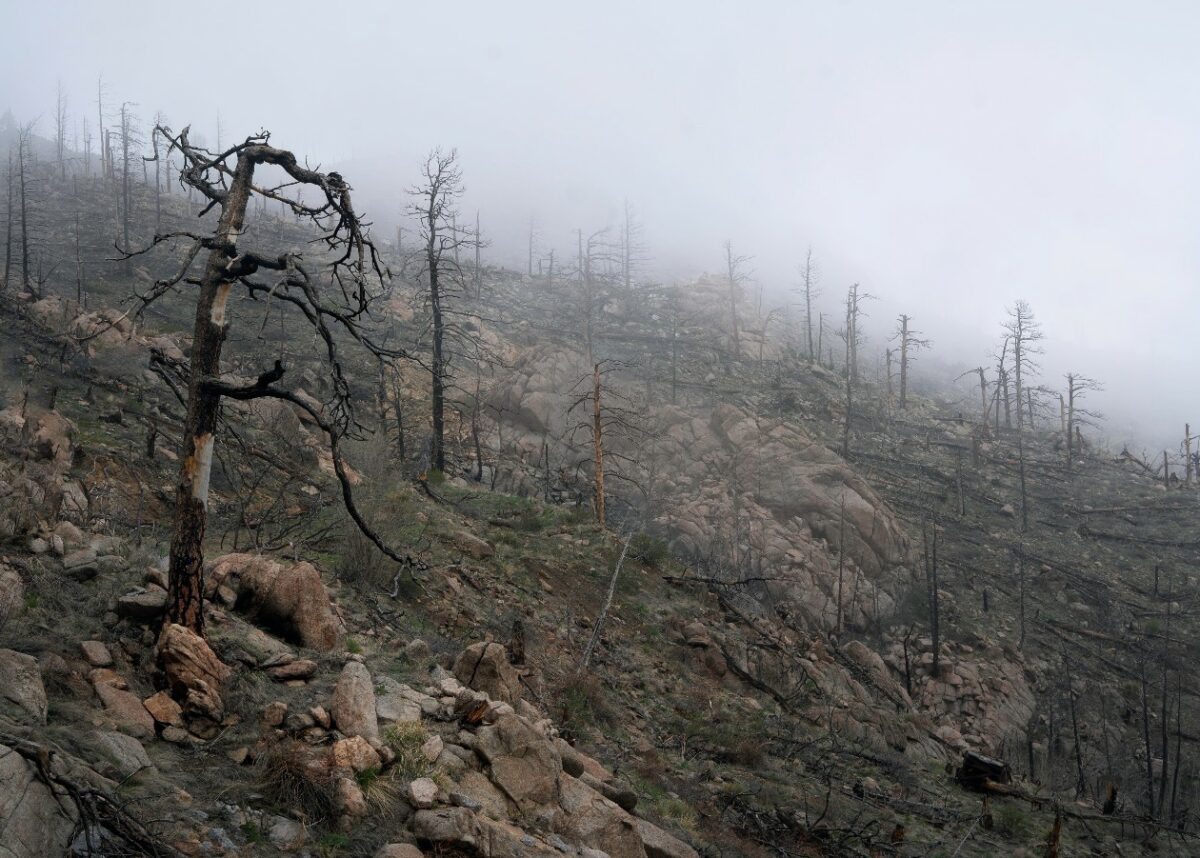Romain Garrouste, Muséum national d’histoire naturelle (MNHN)
For three days, the Massif des Maures in the south of France has burned, and along with it the Plaine des Maures nature reserve – one of the Mediterranean’s jewels of biodiversity, unique in all of Europe.
In an abnormal climate, with soaring temperatures over multiple days and an apocalyptic wind which hopefully stopped the first day, flames have swept the region, consuming vast swathes of the reserve yesterday. As I write this article, there are fires bearing down on three fronts, between the villages of Grimaud, Vidauban and la Garde-Freinet, the stifling heat and constantly changing wind fuelling the flames.
Two have already died, dozens have been injured, and 10,000 people have been evacuated as firefighters battle to contain the blaze.
After two nights of dread and sadness, another seems to be on the way. The staff of the reserve must respect the instructions of firefighters to stay out of danger and resources are being dedicated to defend the coastal regions where houses and campsite are burning to the ground. Between intolerable human tragedies and economic and ecological catastrophes, a terrible toll is building.

I’m a scientist committed to the management of this place and more broadly to the conservation of Mediterranean environments, and have written before about the effect of wildfires on insects in particular.
My colleagues and I are mourning the loss of one of the most beautiful landscapes in France, with its centuries-old pines and ageless oaks, where vines and olive groves grow among riverine forests. The massif is the pride of the entire Var region, with its unique geology and wild vegetation, where superb paths traverse volcanic flows and red sandstone expanses.
But my concern today is for more than the many species that are threatened by these megablazes (whether they are numerous or rare, discreet or emblematic, all of them count). It is also for the loss of years of effort between residents, caretakers and scientists to find a balance in the difficult co-management of a place like this, between conflicts of interest, multiple uses and diverse cultural practices.
In the the land burns, the time has now come to take stock of the difficult compromises we have had to strike over the years and consider new directions and concessions on all sides.
After a disaster like this, everything is reset, literally and figuratively. The future management of this region must involve ecological safeguarding and restoration, with an acute understanding of the new climate situation we as a planet face.
We never thought we would have to rebuild this sanctuary of life and nature such at such an immense scale. In recent years, megafires of this kind, like the ones we experienced in 2003, seemed to be a thing of the past – before this week, our previous efforts to prevent blazes and intervene early seemed to be bearing fruit.
But now we are morning the loss of two lives, dozens of houses, hundreds of tortoises, reptiles, bats and birds, thousands of rare, protected plants and insects, and hectares upon hectares of vital ecosystems. We also must think about the loss of species that had not yet been recorded, and now may never be.

Yes, Mediterranean habitats have adapted to deal with fire, but in this extraordinary context of global heating, these infernoes are changing the ecosystem itself – perhaps forever.
Soon, the residents, park managers, scientists and users of these devastated natural reserves will have to roll up our sleeves and come up with a way to restore them for future generations.
What we don’t yet know is when this fire will stop, and how much will be left when it does.
Romain Garrouste, Chercheur à l’Institut de systématique, évolution, biodiversité (ISYEB), Muséum national d’histoire naturelle (MNHN)
This article is republished from The Conversation under a Creative Commons license. Read the original article.












